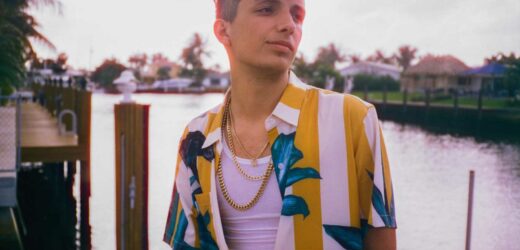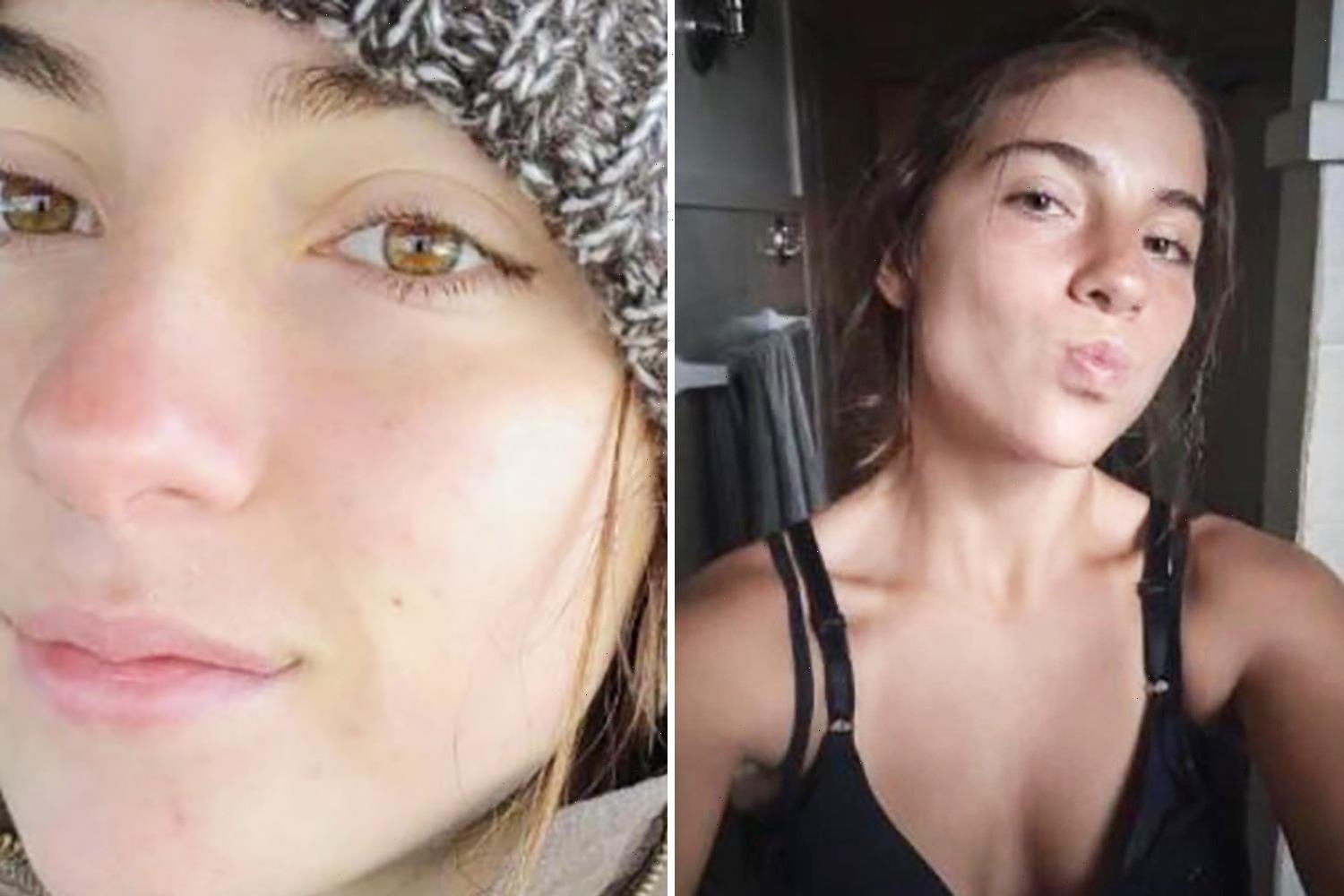Rarin’s “GTA” is a briskly aspirational single — “I been getting all this cash, I don’t need a label/Made it up from nothing fast, yeah this is a fable” — with distorted bass in all the right places. After the rapper released the track, back in the first summer of the pandemic, he noticed it pop up in YouTube videos that contained montages from the popular video game Fortnite, action-packed clips full of leaping, blasting mayhem and merciless digital destruction. Rarin was just a junior in high school; he didn’t have a lot of money to throw at marketing. But he made up for lack of funds with tireless digital hustle. “I commented on every single video that used my song — thousands of videos,” he says. “I just made the best of what I had, put my name out there as much as possible.”
Related Stories
Labels Ignored Muni Long For Years. Then She Scored a TikTok Hit
Spotify's King of Sleep Music Outstreams Lady Gaga, Somehow
Related Stories

The United States of Weed
How Guns N' Roses Formed
Many of the gamers who post Fortnite montages have avid followings, sometimes millions strong, and several of those viewers heard “GTA” in the videos and liked it enough to stream it on their own. This helped Rarin push the track’s streams to 12,000 a day. From there, he signed to the label Black 17, where co-founder Jake Houstle had also been scrutinizing Fortnite communities, intrigued by their potential to activate streaming behavior. Houstle paid more widely-viewed montage creators to post videos soundtracked by “GTA,” and streams of the track shot up to more than 150,000 a day. “The level of attention was beyond what I could believe,” Rarin says.
For long periods of 2020 and 2021, while teens were stuck at home without much to do except play videogames and listen to music, a few small labels, including Black 17 and New 11, used Fortnite montage videos to repeatedly engineer streaming bumps for their acts. Rarin was one of the biggest beneficiaries, generating close to 100 million streams across his catalog. Another major winner was Badda TD, who landed a deal with Epic Records. Dustystaytrue and New 11 rapper Lil Shock also logged millions of streams on “Never Change” and “Rockstar,” respectively, through Fortnite marketing.
“It was almost like striking gold,” says Dillon Druze, who manages Bankroll Hayden, co-founded New 11, and also runs a digital marketing business. “We had like a year-long run where it was really just us and a couple other people running the same play over and over.”
“You were paying $5,000 for a campaign and almost guaranteeing a song will get to 100,000 plays a day,” Houstle says wistfully.
At a time when streaming accounts for the vast majority of the music industry’s revenue and live music’s fate is still uncertain, labels have gone all in on digital marketing campaigns to drive clicks for their artists. But they’re often all fighting over the same spaces — especially TikTok — and as a result, the prices of campaigns have risen and the platform is increasingly oversaturated. On top of that, TikTok has proved harder to manipulate than labels would like. Some marketers have started looking for different digital communities that might spark listenership — Facebook pages in Indonesia, for example.
New 11’s other co-founder, David Kaufman, stumbled on the Fortnite montage community almost by accident. He was scrutinizing various digital rankings, comparing YouTube charts with Spotify’s, when he noticed a few names he was not familiar with. “These were acts that have 10, 15 million streams on records with no major backing, no editorial [support from Spotify],” he recalls. When he visited their YouTube pages, he’d see comments referencing various gamers.
It’s common for popular TikTok creators to take money from labels to use specific songs in their videos, but Kaufman discovered that a lot of the Fortnite montage-makers “had never done song promos before.” “They didn’t even know this was something they could get involved in,” he continues.
It turned out to be a mutually beneficial arrangement, where the gamers behind these channels made more money and Kaufman could get artists more streams. (He told Houstle about the marketing tactic as well.) Not only that, if a song really became popular in the montage community — marketers agree that various flavors of hip-hop tend to work best — people would begin to search for it, which would drive channel viewership as well. “It’s the same as on TikTok — when you have a viral song, everyone uses it to blow up views,” Druze explains.
The marketers began buying posts from channels in bulk, which helped them keep competitors out of the space. Much like radio programmers trying to secure commitments to a star’s new single before it comes out, Kaufman and Druze would send tracks to a slew of prominent gamers pre-release. A certain type of song often seemed to work best: Rap tracks built around a simple guitar loop augmented with rat-a-tat drums and bulbous bass.
Once Kaufman and Druze got gamers interested in their tracks, they would arrange for clips featuring the tune to trickle out carefully. “One week, the first batch of five people, then maybe [a post from] one large influencer,” Druze says. “Second week, another trickle, then another large influencer [would post].”
Black 17 ran successful campaigns for Badda TD’s “Picture I Paint” and Moxas’ “Floor Seats (Text Back),” both of which now have more than 30 million streams on Spotify alone. As “Picture I Paint” was taking off, Mayor Cohen, a marketer and manager, also put money into promoting Badda TD’s “Gang.” “The first dollar I put into it, that thing spiked up,” Cohen says. “We had both records doing over 100,000 streams a day. All the major labels started reaching out to us, and we ended up signing with Epic.”
Major labels also showed interest in another rapper that Cohen works with, Dustystaytrue, after Fortnite montages helped “Never Change” pull in more than 30 million streams on Spotify alone. Dustystaytrue recently went on a tour with Toosie, who is signed to Capitol Records. “The gaming community gave [‘Never Change’] a major boost,” Cohen says. “That started the journey.”
Not every rapper loved being associated with Fortnite, even if it helped boost their streams. Some “looked at it as corny,” Houstle says. “But you’re talking about hundreds of thousands of kids. If you go a step beyond, this can be way bigger for you than you realize.”
For proof, he points to Rarin, who grew deep roots in the Fortnite montage community — perhaps not surprising, considering he had also commented on every video using “GTA” in the months after its release. “As a fan, I love to feel close to my favorite artists, so I tried to give that experience to my listeners,” he says. “I created a Discord and would talk to them every day. We would do events and watch movies together. That gives really important consistency to my streaming numbers — I don’t even need to market my songs, and I’ll get thousands of streams a day.”
There were two prominent issues with Fortnite marketing. The first had to do with revenue generation. Since many of the members of the montage-watching community are younger, they use the ad-supported version of Spotify — Houstle estimates more than 60% of listeners fall into this camp. Ad-supported streams earn less than streams from paying users. In addition, while the global nature of Fortnite fandom helps songs in montage videos reach around the world, plays from countries outside of the U.S. — Mexico, Russia, Brazil — also earn less than plays that originate Stateside. “A lot of the streams come from regions that don’t pay out well,” Houstle says.
The second issue was of greater concern: Pumping songs through the Fortnite montage community started to lose its effectiveness. “Some gamers have taken songs that don’t fit their channel,” Druze says. “Channels die if you take a paid placement for something that doesn’t make sense.”
In addition, members of what Houstle refers to as “the shadow council” — Black 17, New 11, and a few other labels that were throwing themselves headlong into Fortnite marketing — were ultimately unable to keep the space to themselves. “What made it harder is these major labels coming in,” Rarin says. “They sweep the floor, buy out everyone, raise the prices, cut out a lot of independent artists. Now that everyone’s marketing, it’s oversaturated.”
Cohen agrees. “It’s crazy how quickly it got saturated,” he says. He estimates that Fornite marketing is less than 25% as effective as it once was.
As the price of these campaigns increased, it reached the point where they were no longer worth doing. “When a $10,000 campaign gets a song doing 100,000 streams a day, you’re [recouped] in six months, maybe nine months,” Houstle says. “But when the price goes to 20,000, I might not make that back.”
That means the marketers are back in the hunt, searching for new pools of untapped listeners. “Once everyone is paying for something, it’s done,” Kaufman says. “You always have to be looking for the next thing.”
Source: Read Full Article


